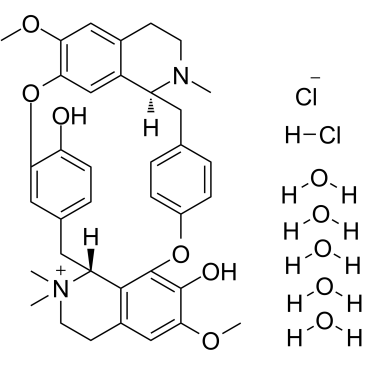Chemical communication between regenerating motor axons and Schwann cells in the growth pathway.
Gerta Vrbova, Neeraj Mehra, Harei Shanmuganathan, Neil Tyreman, Melitta Schachner, Tessa Gordon
文献索引:Eur. J. Neurosci. 30(3) , 366-75, (2009)
全文:HTML全文
摘要
There are receptors on denervated Schwann cells that may respond to the neurotransmitters that are released from growth cones of regenerating motor axons. In order to ascertain whether the interaction of the transmitters and their receptors plays a role during axon regeneration, we investigated whether pharmacological block of the interaction would reduce the number of motoneurons that regenerate their axons after nerve section and surgical repair. Peripheral nerves in the hindlimbs of rats and mice were cut and repaired, and various drugs were applied to the peripheral nerve stump either directly or via mini-osmotic pumps over a 2-4-week period to block the binding of acetylcholine to nicotinic and muscarinic acetylcholine receptors (AChRs: alpha-bungarotoxin, tubocurarine, atropine and, gallamine) and binding of ATP to P2Y receptors (suramin). In rats, the nicotinic AChR antagonistic drugs and suramin reduced the number of motoneurons that regenerated their axons through the distal nerve stump. In mice, suramin significantly reduced the upregulation of the carbohydrate HNK-1 on the Schwann cells in the distal nerve stump that normally occurs during motor axon regeneration. These data indicate that chemical communication between regenerating axons and Schwann cells during axon regeneration via released neurotransmitters and their receptors may play an important role in axon regeneration.
相关化合物
| 结构式 | 名称/CAS号 | 分子式 | 全部文献 |
|---|---|---|---|
 |
氯化筒箭毒碱五水合物
CAS:6989-98-6 |
C37H52Cl2N2O11 |
|
Acetylcholine induces Ca2+ signaling in chicken retinal pigm...
2009-05-01 [Am. J. Physiol. Cell Physiol. 296 , C1195-206, (2009)] |
|
Interaction of d-tubocurarine analogs with the mouse nicotin...
1997-10-03 [J. Biol. Chem. 272 , 24891-24898, (1997)] |
|
Acetylcholine receptor inhibition by d-tubocurarine involves...
1986-04-08 [Biochemistry 25 , 1786, (1986)] |
|
Proteasome inhibition with bortezomib depletes plasma cells ...
2011-02-15 [J. Immunol. 186 , 2503-13, (2011)] |
|
Genetic visualization with an improved GCaMP calcium indicat...
2011-03-29 [Proc. Natl. Acad. Sci. U. S. A. 108 , 5425-30, (2011)] |